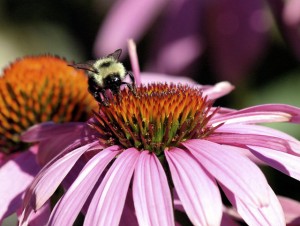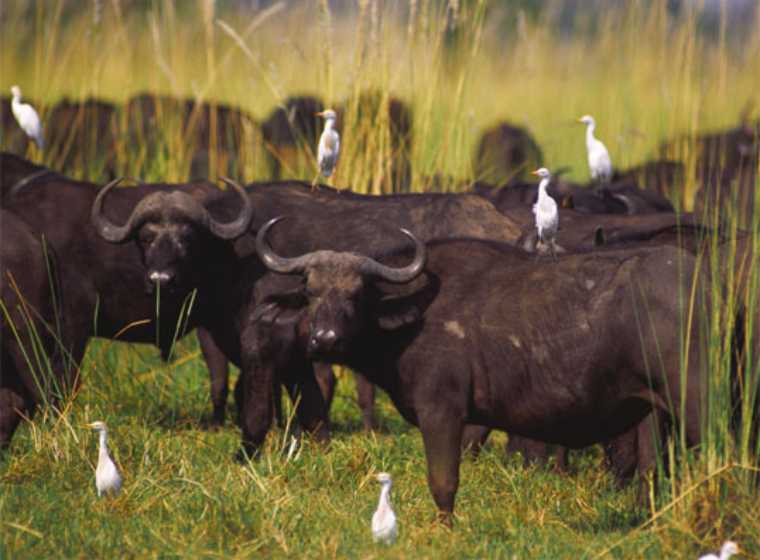Positive interactions occur when neither species is harmed and the benefits of the interaction are greater than the costs for at least one species. Facilitation is a synonym for positive interactions.
Mutualism: Mutually beneficial interaction between individuals of two species (+/+).
Commensalism: Individuals of one species benefit, while individuals of the other species do not benefit and are not harmed (+/0). (Birds cleaning off non-parasitic bugs on large herbivores)
Symbiosis: A relationship in which the two species live in close physiological contact with each other, such as corals and algae.
Symbioses can include parasitism (+/–), commensalism (+/0), and mutualism (+/+).
Most plants form mycorrhizae: Symbiotic associations between the roots and various fungi. (found everywhere- essential for plant evolution on land)
The fungi increase the surface area for the plant to take up water and soil nutrients (over 3 m of fungal hyphae may extend from 1 cm of plant root).
Ectomycorrhizae: The fungus grows between root cells and forms a mantle around the root. Small, multiple roots; thin “worm-like” extensions,
Arbuscular mycorrhizae: The fungus grows into the soil, extending away from the root; and also penetrates into some of the plant root cells. (longer, spine-like sheath root systems)

- Corals form a mutualism with symbiotic algae.
- The coral provides the alga with a home, nutrients (nitrogen and phosphorus), and access to sunlight.
- The alga provides the coral with carbohydrates produced by photosynthesis.
- Herbivores such as cattle and sheep depend on bacteria and protists that live in their guts to help metabolize cellulose. (mutualism)
- Another example is mutualism is pollination
- Wood-eating insects also have gut protists that can digest cellulose.
- Commensalism is also everywhere.
- Millions of species form +/0 relationships with organisms that provide habitat.
- Different types of ecological interactions can evolve into commensalism or mutualism.
- Mutualism can arise from a host–parasite interaction.
- Some positive interactions are highly species-specific, and obligate (not optional for either species, rely on each other).
- Many mutualisms and commensalisms are facultative (not obligate) and show few signs of coevolution.
- Interactions between two species can be categorized by the outcome for each species:

- Positive (benefits > costs).
- Negative (costs > benefits).
- Neutral (benefits = costs).
- But costs and benefits can vary.
- Each partner in a mutualistic interaction acts in ways that serve its own ecological and evolutionary interests.
- Mutualisms can be categorized by the type of benefits that result.
- Trophic mutualisms: Mutualist receives energy or nutrients from its partner. (i.e mycorrhizae)
- Habitat mutualisms: One partner provides the other with shelter, living space, or favorable habitat.
- Service mutualisms: One partner performs an ecological service for the other. Ecological services include pollination, dispersal, and defense against herbivores, predators, or parasites. (i.e bees pollinating plants)
- Cheaters are individuals that increase offspring production by overexploiting their mutualistic partner.
- Positive interactions affect the abundances and distributions of populations as well as the composition of ecological communities.
- Mutualism and commensalism can increase the growth, survival, or reproduction of the interacting species.
- Positive interactions also influence community composition.
- Many coral reef fish have service mutualisms with smaller organisms (cleaners) that remove parasites from the fish (clients).

